Week 13-17 January
This week’s progress follows that of the previous semester. This lesson is about the synthesis of 3D space in nuke and camera tracking. Emphasis is placed on how to match the motion of the camera and the placement of objects in the three-dimensional space, the production of materials and the use of lens distortion.
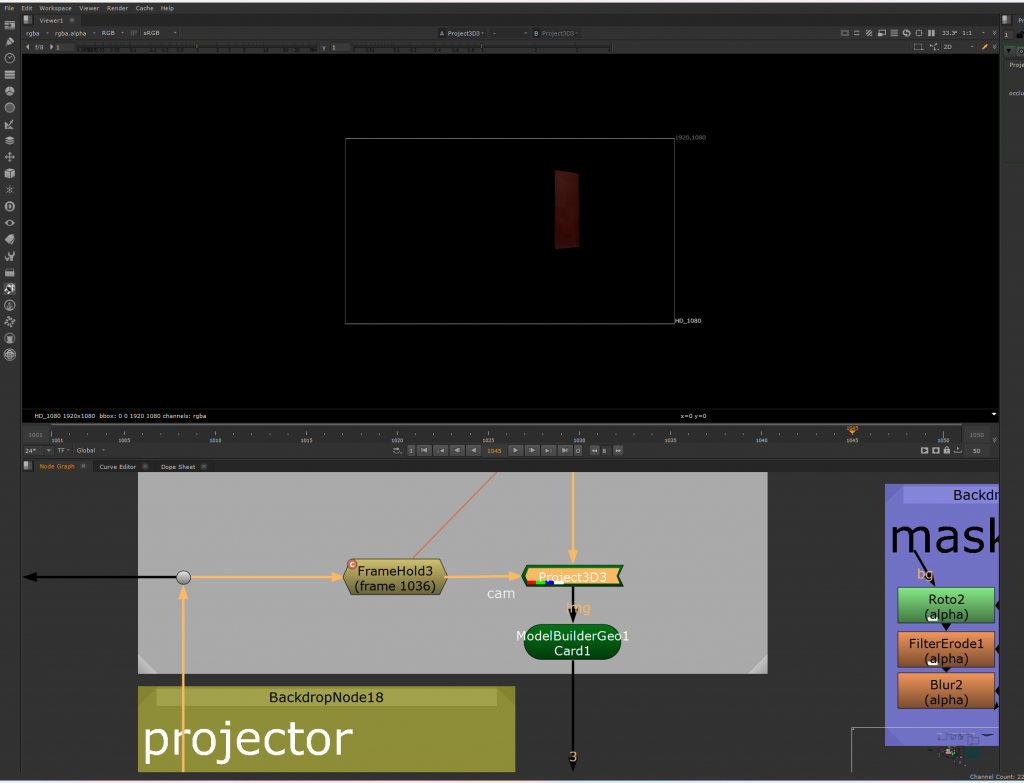
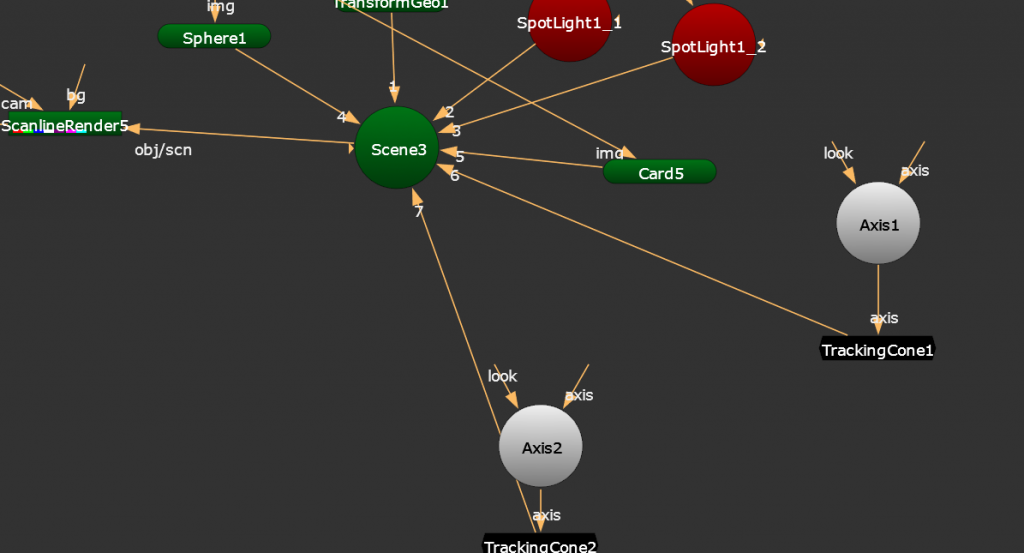
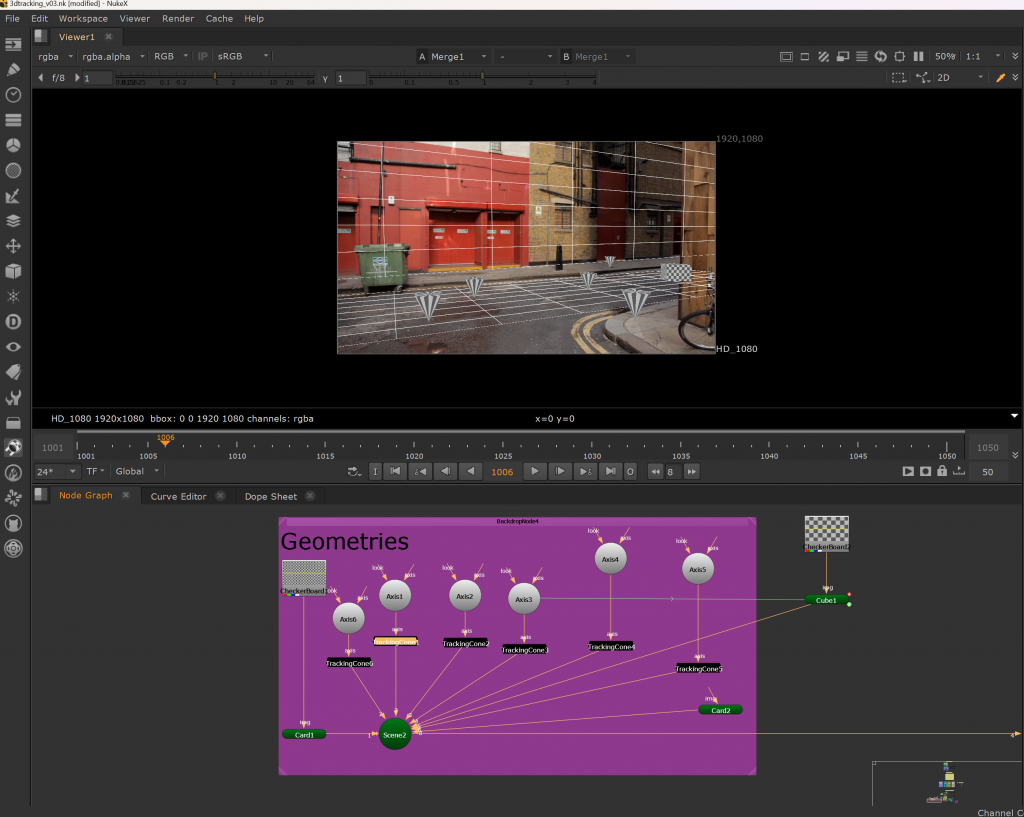
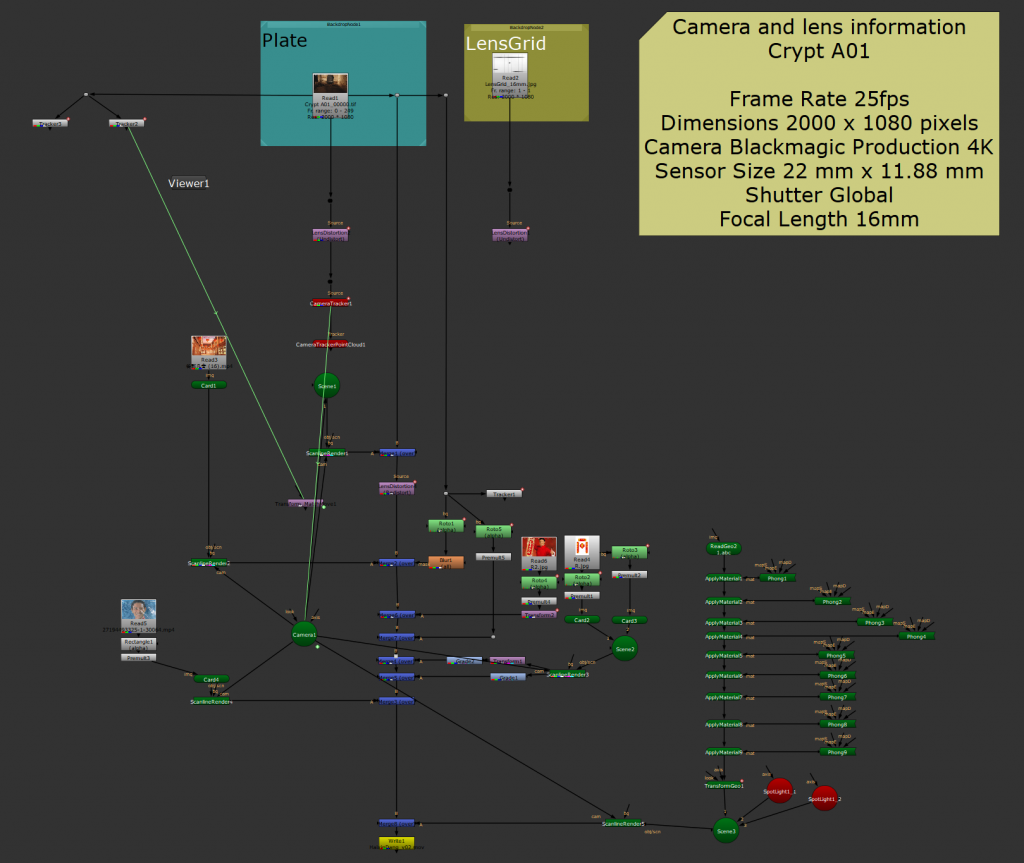
This week’s work is to synthesize some three-dimensional surfaces and cones into the video. The focus of this technology is the use of camera tracking and the removal and reuse of lens distortion. The most important thing in this process is to ensure that the camera movement matches. In the homework, I did not want to simply finish an assignment. Considering that the Chinese Spring Festival is coming soon, I specially added elements of Chinese New Year into this assignment, and completed the assignment to express my joy for the festival.
Of course, this video does not meet the requirements of the assignment, and I added too many of my own ideas to the requirements of the assignment. So I created a new version of the video that fits the bill.
Week 20-24 January
This week’s lesson is an advanced version of last week, on top of which we learned the specific knowledge and details of 3D tracking synthesis. The final job is to erase tracking points and marks on the walls as well as on the ground.
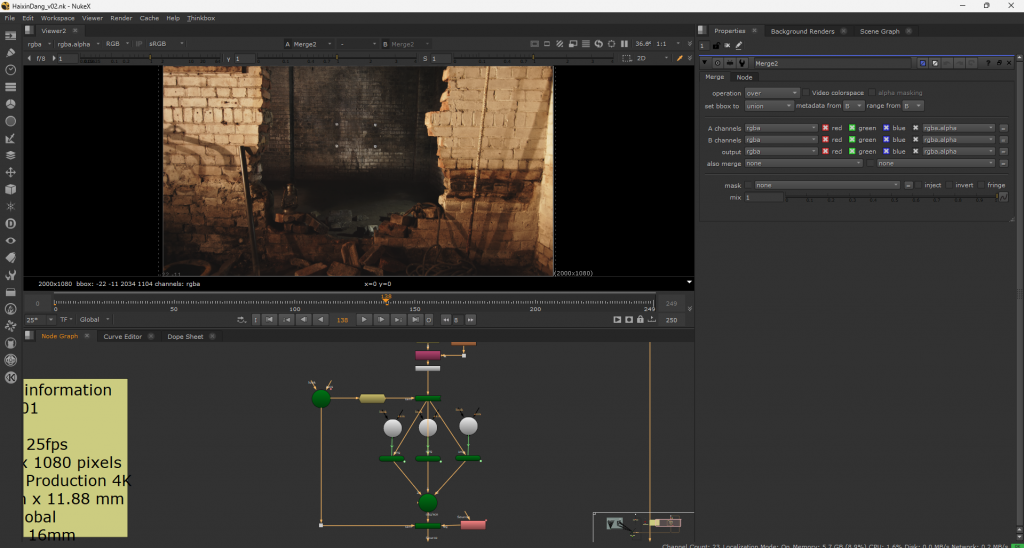

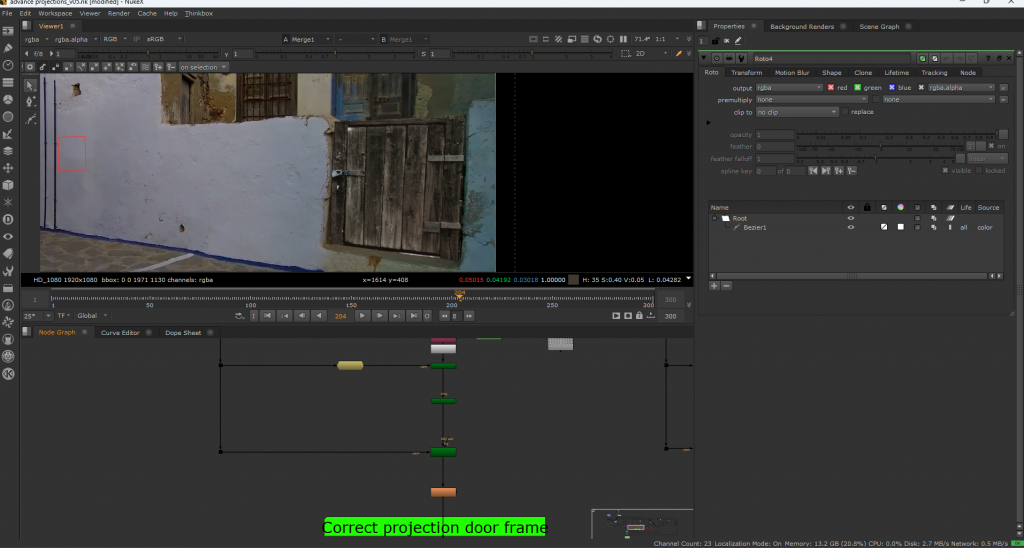
Week 27-31 January
This week’s course is mainly about the processing of light in nuke and the multi-channel separation and hierarchical processing and synthesis of aovs. This is a very useful technique that allows me to quickly adjust various details of the image without having to re-render it. This week’s assignment is to complete the task of compositing the car into the background, aiming to exercise our multi-channel compositing ability.

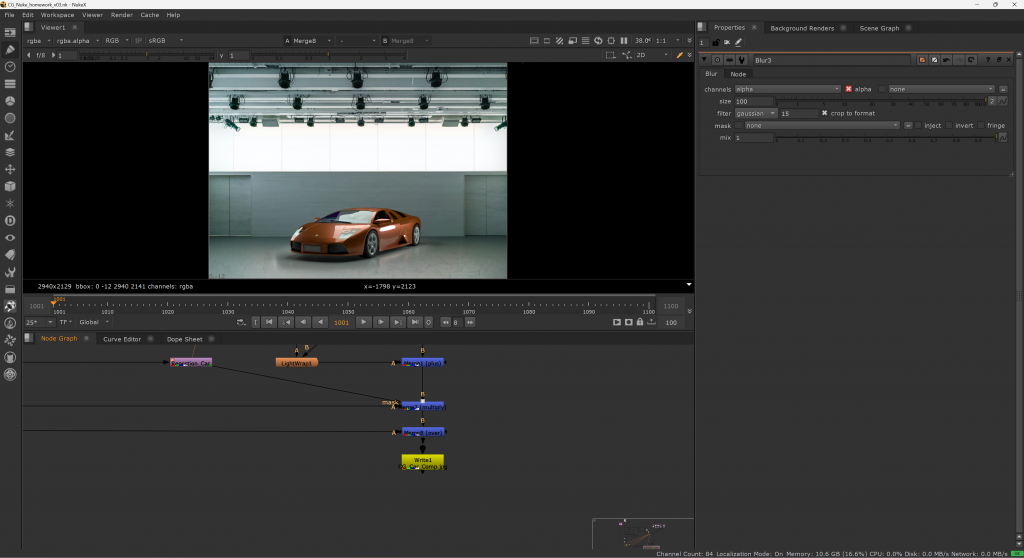
Week 3-7 February
This week’s nuke study is like a wrap up, with a complete synthesis case to teach you how to put what you’ve learned together. The case is mainly to eliminate tracking points, reverse camera, 3D scene sub-channel rendering, hierarchical color matching, and qc inspection. Many of the steps are very important, and it is also my first exposure to understand. I find nuke’s study very useful.
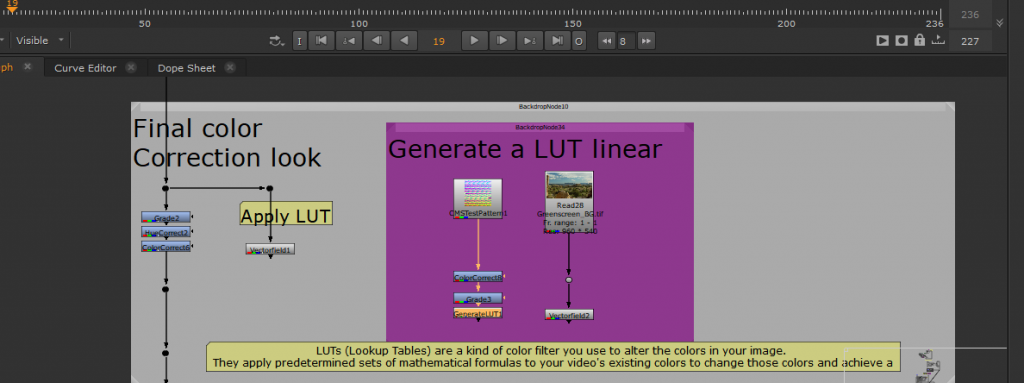
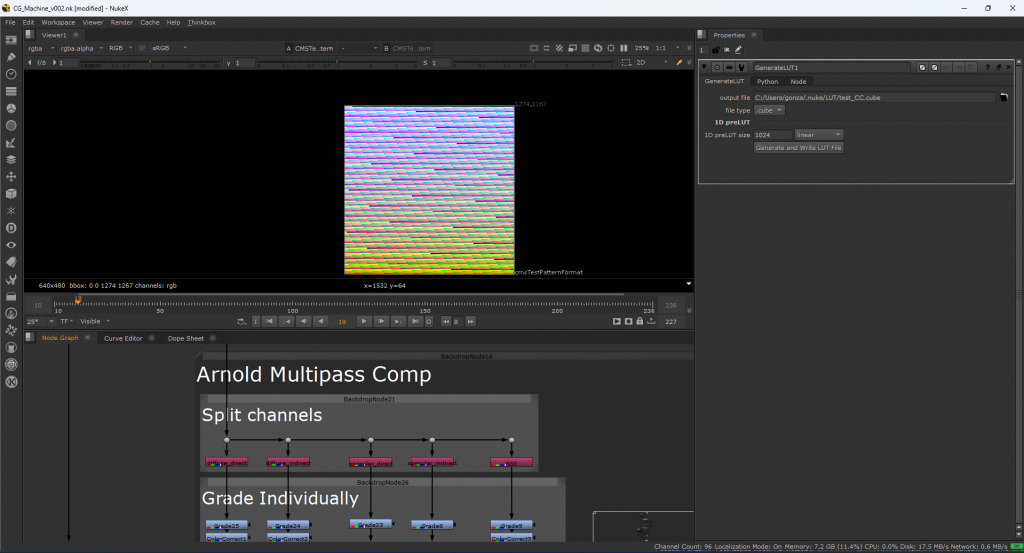
Week 10-14 February
In Thursday’s lesson, we mainly learned how to use the different nodes in nuke to pick the green screen. One of the most critical technologies is the suppression of overflow. In nuke, this can be achieved through a lot of different node collocation, and the teacher finally stressed that the most important thing is to achieve this through the mixed computation of different channels, and the most important thing is not to affect other channels. This is the core of the course.

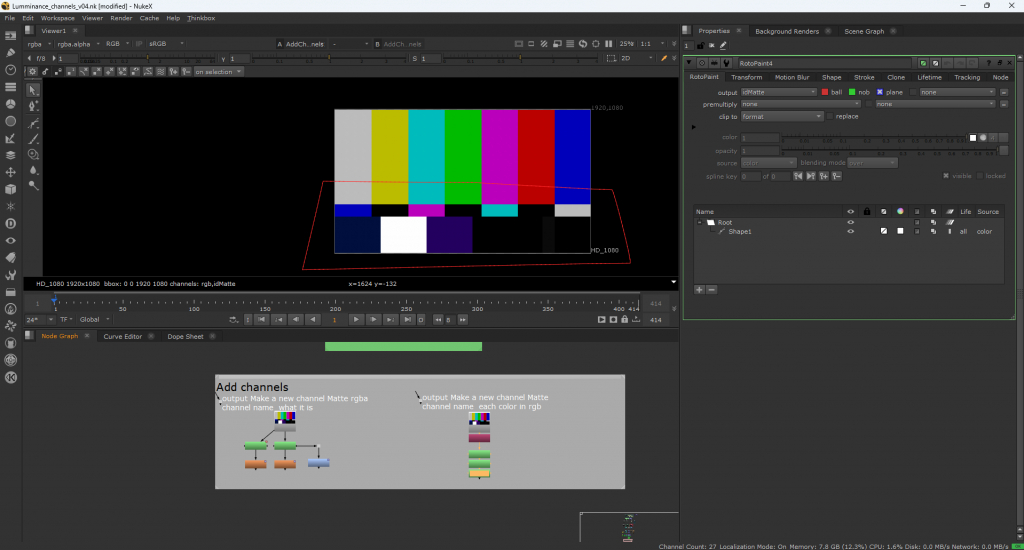
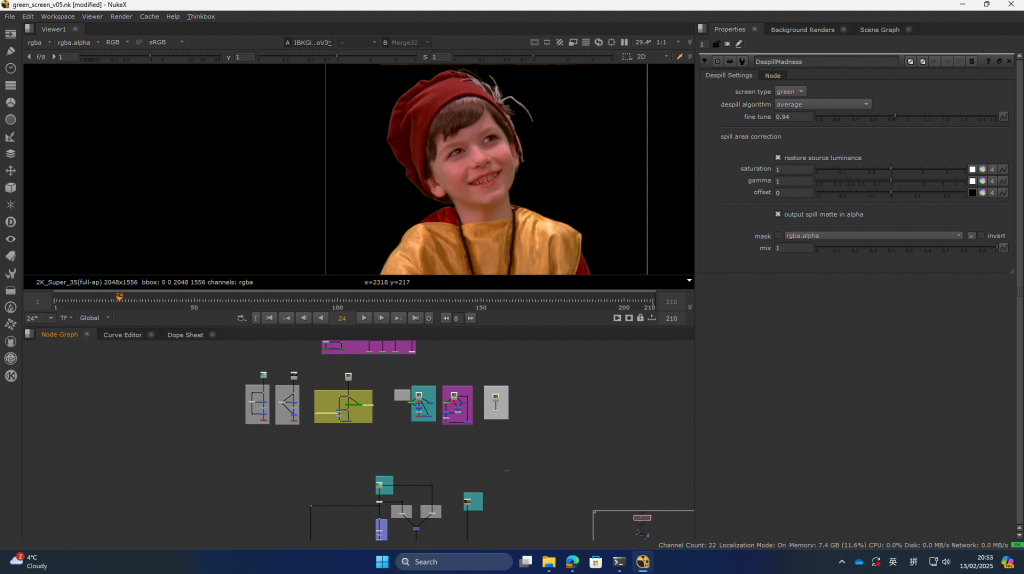
Week 17 Feb- 21 Feb
In this week’s lesson, we learned how to tap the green screen and how to suppress overflows through various nodes in nuke. In fact, the most important core of the green screen is the separation and reorganization of the channel, to ensure the real green screen synthesis effect to ensure that the channel separation, non-interference. Only in this way can we flexibly modify the final effect under new requirements.
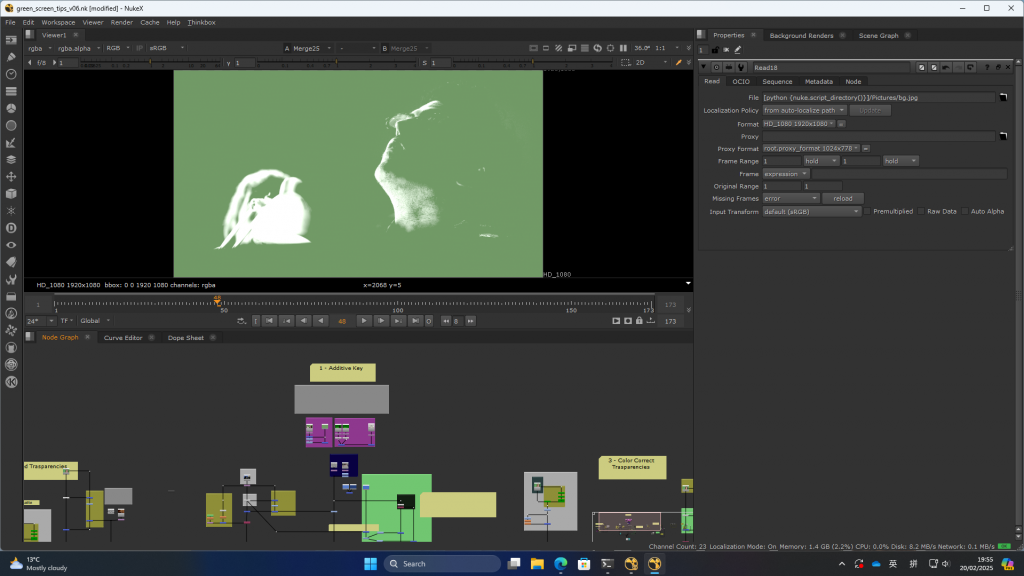
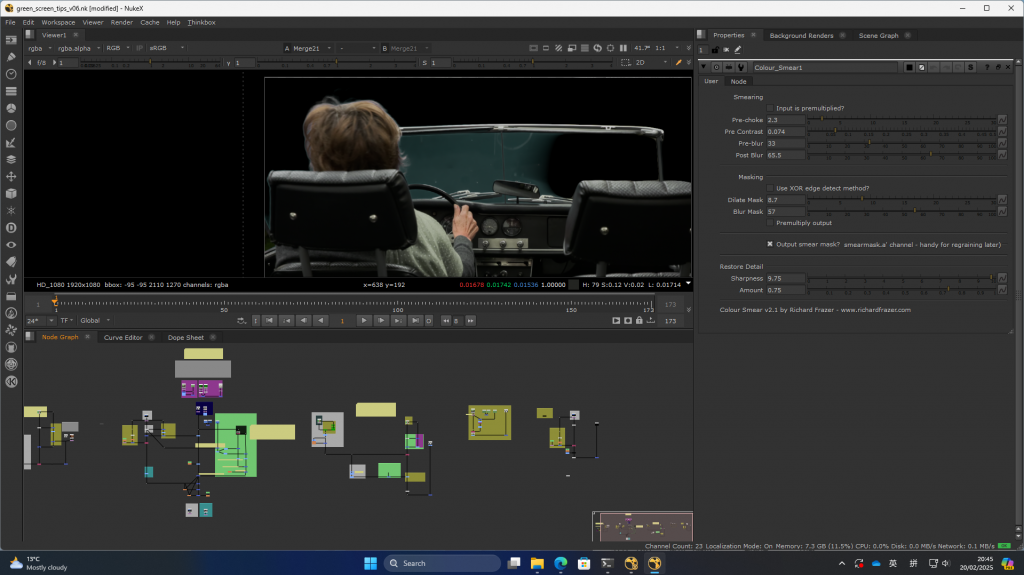
Week 24 Feb -28 Feb
This week’s nuke lesson focused on the various ways to erase tracking points on moving objects, the core principle of which is the processing of detail information, by retaining the details of the original data and attaching them to the new mask layer, so as to ensure the authenticity of the composition. There are a lot of new nodes that are used, which is very helpful for us.
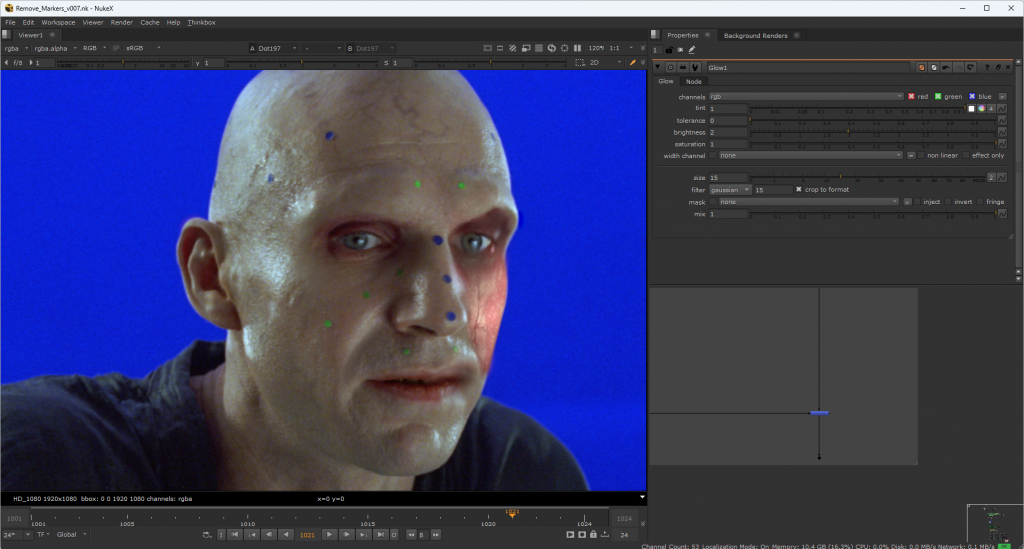

Week 03 Mar -07 Mar
This week we learned how to customize our own plugins, that is, the use of group nodes in nuke and how to customize them, which means that nuke’s learning is gradually deepening. During this process, I also realized the power of nuke, which, much like houdini, greatly improved the efficiency of my effects through powerful customizations.

Week 10 Mar- 14 Mar
This week we learned about the use of particles in the nuke class, which is of great significance to me. Because my goal is to become a special effects artist, I am mainly interested in houdini’s particle effects, and nuke’s particle effects have helped me very well, which can make up for some of my shortcomings in particles. At the same time, it gave me a new way to make simple particles, not in houdini, but in nuke.

Week 17 Mar- 21 Mar
This lesson does not talk about the software part, but about the situation of employment. At present, the special effects industry in London is saturated, and it is difficult for junior special effects artists to find work in London, especially if they have no work experience. And about the way to find a job and interview skills, I learned a lot in the class. Whether it’s linkedin or the website of a special effects company, it’s a great place to find a job.
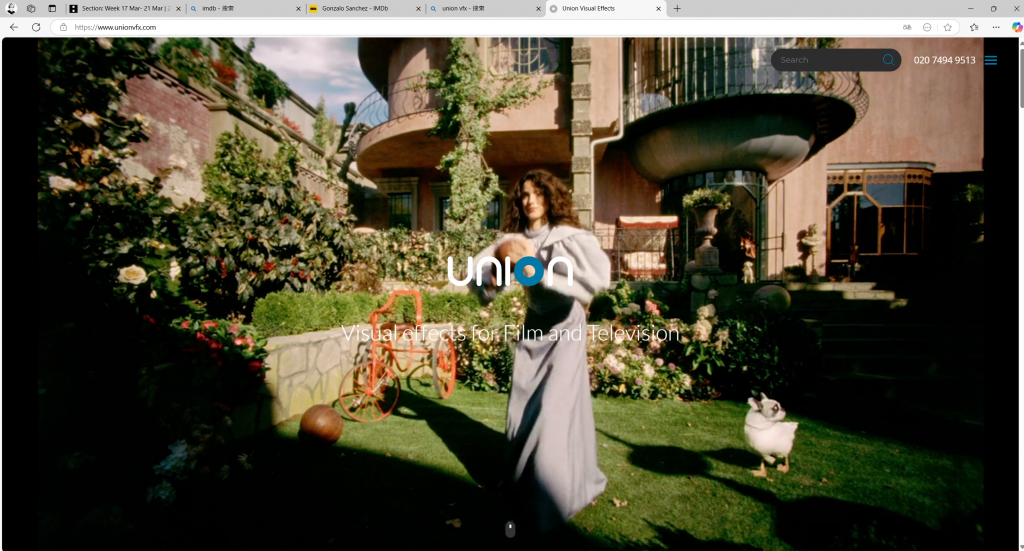
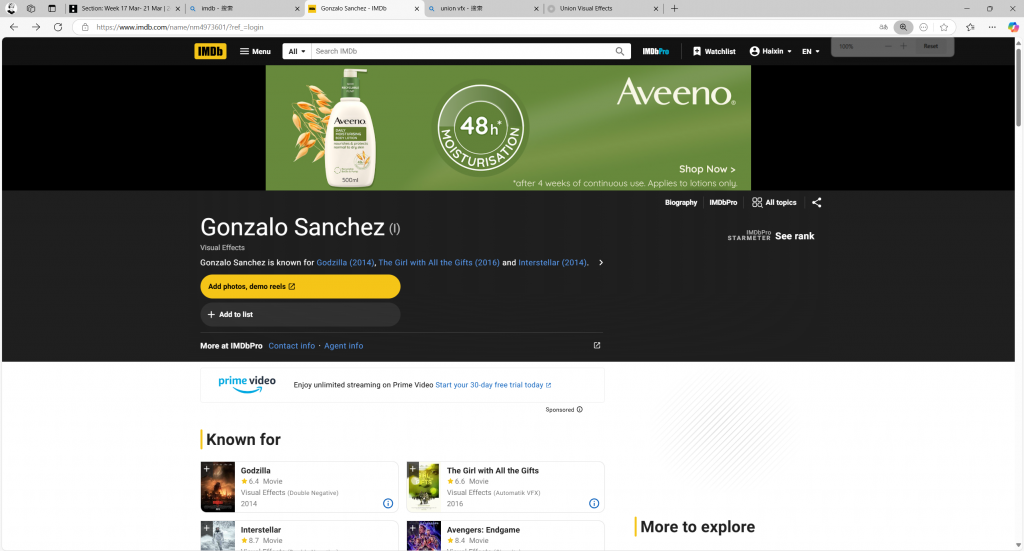
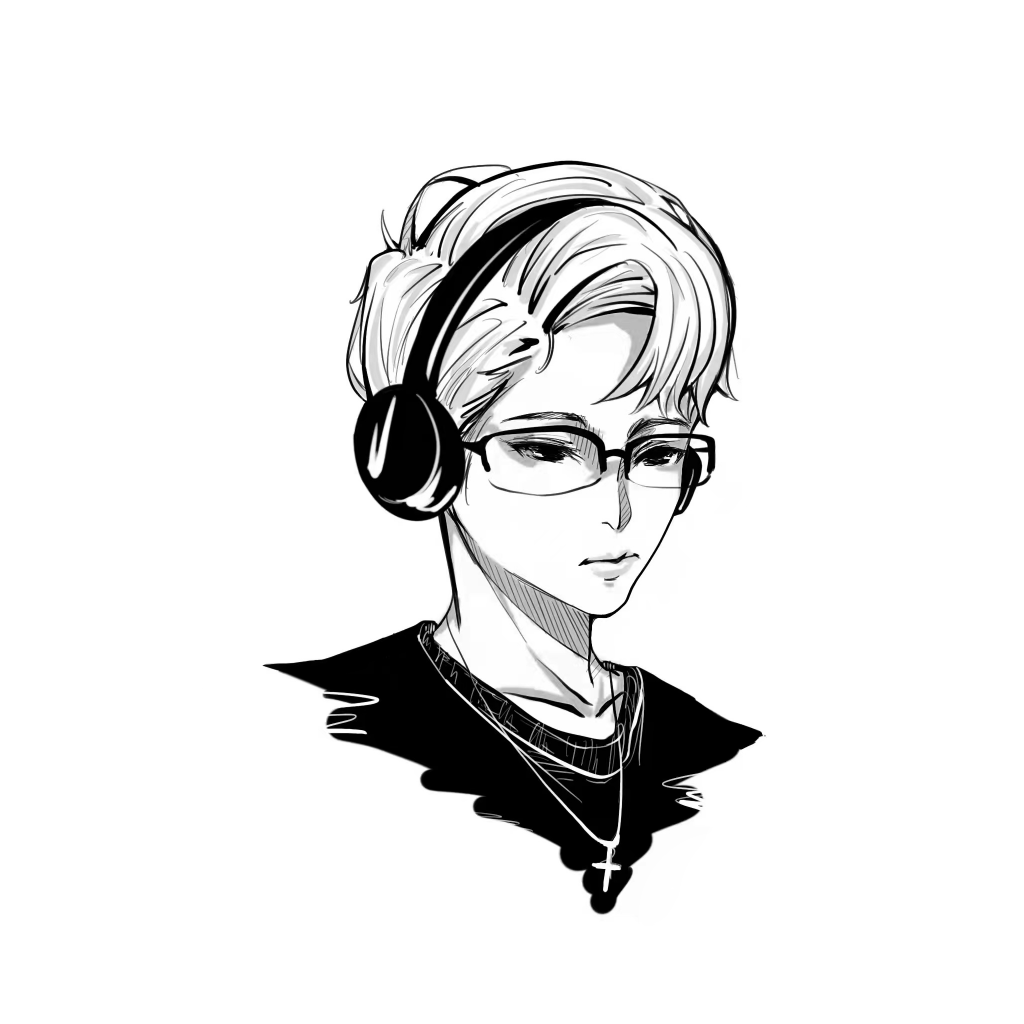
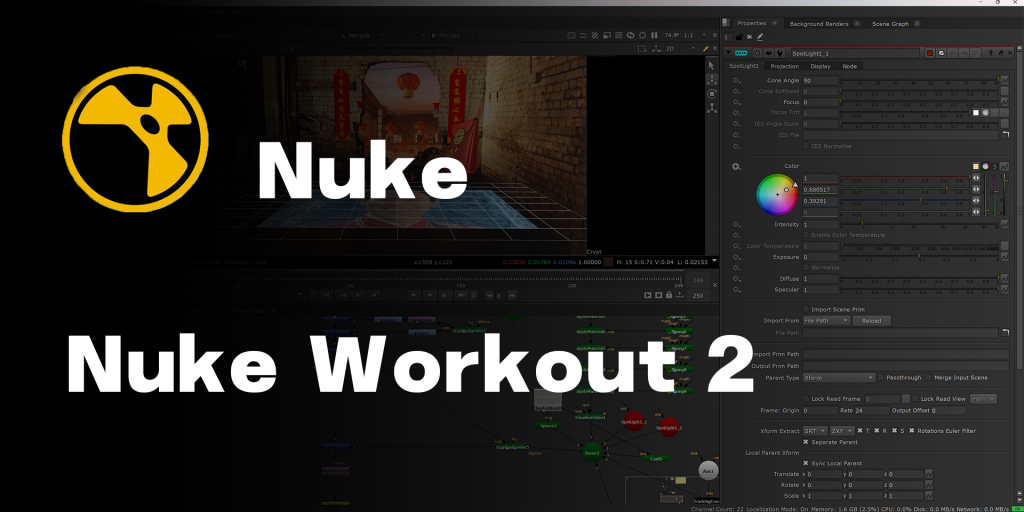
Leave a Reply